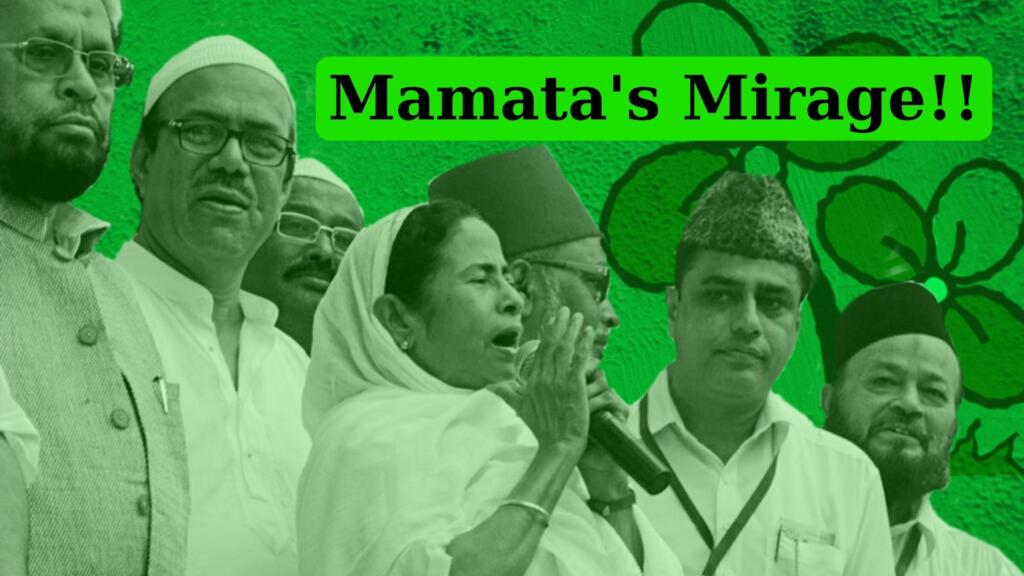The battleground of Bengal’s elections is not merely a clash between the Trinamool Congress (TMC) and the Bharatiya Janata Party (BJP). It’s a multifaceted triangular contest involving the Communist Party of India (Marxist) as well. In this intricate political landscape, simplistic narratives fail to capture the true essence of the dynamics at play. As the state gears up for elections, it becomes imperative to delve deeper into the complexities that shape its political trajectory.
The Enigma of Mamata Banerjee and the TMC
Mamata Banerjee, the formidable leader of the Trinamool Congress (TMC), embodies a paradox within Bengal’s political landscape. Despite facing accusations of corruption within her party, Mamata’s personal integrity and unwavering dedication to welfare initiatives continue to strike a chord with specific segments of the electorate.
At the heart of Mamata’s enigmatic appeal lies her charismatic leadership. Her political persona transcends the traditional boundaries of party lines, resonating with a diverse array of voters. Particularly noteworthy is her strong connection with women voters, who see in her a beacon of empowerment and progress. Mamata’s commitment to women-centric policies and schemes has endeared her to this crucial demographic, bolstering her electoral prospects.
Moreover, Mamata’s governance style is characterized by a hands-on approach to delivery mechanisms. Unlike many political leaders who delegate administrative tasks, Mamata has been actively involved in overseeing the implementation of welfare programs. This direct engagement has instilled a sense of trust among the populace, reinforcing her image as a leader who gets things done.
However, the TMC’s Achilles’ heel lies in the conduct of its local cadres. Allegations of corruption and high-handedness against these grassroots operatives have fueled resentment among certain sections of the electorate. While Mamata herself remains untainted by personal corruption scandals, the tarnished reputation of some party members threatens to erode the TMC’s electoral appeal.
Despite these challenges, Mamata’s leadership continues to exert a gravitational pull on Bengal’s political landscape. Her ability to navigate through turbulent waters and maintain a strong foothold amidst adversities underscores her resilience as a leader. As the state braces itself for electoral battles, Mamata’s enigma remains a defining factor in shaping the TMC’s electoral fortunes.
BJP’s Ambitious Bid for Bengal
The Bharatiya Janata Party’s (BJP) ambitious bid for Bengal transcends mere electoral calculations; it represents a strategic imperative in its larger vision of establishing a Hindu Rashtra. The party’s relentless campaign efforts and strategic maneuvers in the state underscore its determination to expand its footprint beyond traditional strongholds.
At the core of the BJP’s Bengal strategy lies its concerted efforts to consolidate support among subaltern groups. Communities like the Matuas, with their significant electoral sway, have emerged as key battlegrounds for the BJP. By addressing their grievances and offering promises of socio-economic upliftment, the BJP aims to broaden its support base and weaken the dominance of regional parties like the Trinamool Congress (TMC).
However, navigating the complexities of Bengal’s socio-political landscape poses formidable challenges for the BJP. One such challenge lies in striking a delicate balance between communal rhetoric and geopolitical interests. While the BJP has a track record of leveraging communal polarization to its advantage in other states, Bengal presents a unique set of circumstances.
The state’s diverse demographic composition and historical legacy of communal harmony necessitate a nuanced approach from the BJP. Overly aggressive communal messaging runs the risk of alienating crucial voter segments and sparking social unrest. Moreover, given Bengal’s proximity to Bangladesh and its significance in India’s geopolitical calculus, the BJP must tread carefully to avoid antagonizing neighboring countries.
The BJP’s engagement with communities like the Matuas also comes with its own set of challenges. Despite making promises of citizenship rights through initiatives like the Citizenship Amendment Act (CAA), the BJP must address lingering doubts and apprehensions within these communities. The recent disqualification of over four lakh Matuas from citizenship in Assam underscores the complexities of the issue and the need for cautious diplomacy.
Also Read: Shhh… Mamata Speaks? Banerjee’s Alleged Silence over Sandeshkhali
Unraveling Bengali Exceptionalism
Unraveling the complexities of Bengal’s electoral landscape reveals a narrative far more intricate than simplistic notions of Bengali exceptionalism suggest. Contrary to popular rhetoric, the focus shifts towards regions where the Trinamool Congress (TMC) holds sway, underscoring the multifaceted dynamics of power play at play.
The strategic restraint exhibited by the Bharatiya Janata Party (BJP) in its communal messaging reflects a calculated move aimed at avoiding alienation of crucial voter segments and safeguarding diplomatic ties with Bangladesh. This nuanced approach acknowledges the diverse demographic composition and historical legacy of communal harmony in Bengal, challenging the conventional wisdom that communal polarization is a one-size-fits-all electoral strategy.
The Resurgence of the Left
In this complex political landscape, the resurgence of the Communist Party of India (Marxist) (CPI(M)) emerges as a significant player, capitalizing on discontent against the TMC’s perceived high-handedness. By forging alliances and tapping into the grievances of the populace, the Left seeks to challenge the status quo and offer an alternative narrative to the electorate.
However, the success of the Left’s resurgence hinges on its ability to navigate the intricate web of local dynamics and national imperatives. While discontent against the TMC may provide fertile ground for the Left’s revival, it must reconcile its local agendas with broader national goals to remain relevant in the political discourse.
In Conclusion, As Bengal braces itself for electoral battles, simplistic narratives fall short in capturing the nuances of its political fabric. Beyond TMC’s corruption and BJP’s communal drive lies a complex interplay of regional dynamics, strategic maneuvers, and ideological contestations. Deciphering these complexities is essential to understanding the true essence of Bengal’s elections and its implications for the nation at large.
Also Read: In the Face of Water Woes, Bengaluru Demands WFH Mandate Now!
